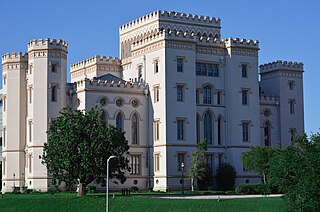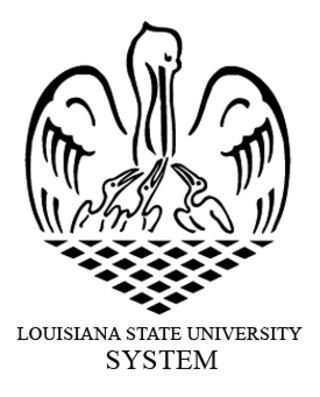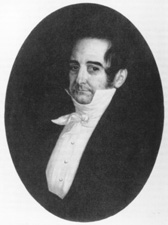
Baton Rouge is the capital city of the U.S. state of Louisiana. Located on the eastern bank of the Mississippi River, it is the parish seat of East Baton Rouge Parish, Louisiana's most populous parish. Since 2020, it has been the second-largest city in Louisiana after New Orleans; Baton Rouge is the 18th-most-populous state capital. According to the 2020 United States census, the city-proper had a population of 227,470; its consolidated population was 456,781 in 2020. The city is the center of the Greater Baton Rouge area—Louisiana's second-largest metropolitan area—with a population of 870,569 as of 2020, up from 802,484 in 2010. Baton Rouge is the fourth most populous city proper in the Deep South region of the southeastern United States.
The music of Louisiana can be divided into three general regions: rural south Louisiana, home to Creole Zydeco and Old French, New Orleans, and north Louisiana. The region in and around Greater New Orleans has a unique musical heritage tied to Dixieland jazz, blues, and Afro-Caribbean rhythms. The music of the northern portion of the state starting at Baton Rouge and reaching Shreveport has similarities to that of the rest of the US South.

Louisiana State University is a public land-grant research university in Baton Rouge, Louisiana. The university was founded in 1860 near Pineville, Louisiana, under the name Louisiana State Seminary of Learning & Military Academy. The current LSU main campus was dedicated in 1926, consists of more than 250 buildings constructed in the style of Italian Renaissance architect Andrea Palladio, and the main campus historic district occupies a 650-acre (260 ha) plateau on the banks of the Mississippi River.

The Louisiana State University System is a system of public colleges and universities in Louisiana. It is budgetarily the largest public university system in the state.

Southern University and A&M College is a public historically black land-grant university in Baton Rouge, Louisiana. It is the largest historically black college or university (HBCU) in Louisiana, a member-school of the Thurgood Marshall College Fund, and the flagship institution of the Southern University System. Its campus encompasses 512 acres, with an agricultural experimental station on an additional 372-acre site, five miles north of the main campus on Scott's Bluff overlooking the Mississippi River in the northern section of Baton Rouge.

Charles Dominique Joseph Bouligny was a lawyer and politician, elected as U.S. Senator from Louisiana, serving from 1824 to 1829. He had earlier served in the territorial House of Representatives. Of French and Spanish descent, he was brother to Louis Bouligny, a state representative, and uncle of John Edward Bouligny, who was elected as U.S. Representative from New Orleans.

Fazendeville was a small, historic, African American community in St. Bernard Parish, Louisiana, United States. Located near the Freedmen's Cemetery in the parish, this village was razed during the 1960s as part of an expansion of the Chalmette National Battlefield in the Jean Lafitte National Historic Park and Preserve.
Carlos Gustave Spaht, I, was a Louisiana judge best remembered for having lost the Democratic gubernatorial runoff election in January 1952 to fellow Judge Robert F. Kennon of Minden, the seat of Webster Parish in northwestern Louisiana. Spaht's unsuccessful running mate for lieutenant governor was future Governor John J. McKeithen of Columbia, the seat of Caldwell Parish in north Louisiana. McKeithen lost to then State Senator C.E. "Cap" Barham of Ruston, the seat of Lincoln Parish, also in north Louisiana. At the time, McKeithen was an outgoing member of the Louisiana House of Representatives.

Robert Charles (1865–1900) was an African-American living in New Orleans who took part in a gunfight after being assaulted by a police officer, leading to the death of 4 police and 2 civilians, and the wounding of over 20 others. The event sparked a major race riot in 1900; known as the Robert Charles riots.

Louisiana African American Heritage Trail is a cultural heritage trail with 38 sites designated by the state of Louisiana, from New Orleans along the Mississippi River to Baton Rouge and Shreveport, with sites in small towns and plantations also included. In New Orleans several sites are within a walking area. Auto travel is required to reach sites outside the city.
Adeline Marie Masquelier is a Professor of Anthropology at Tulane University in New Orleans, Louisiana.
The culture of Louisiana involves its music, food, religion, clothing, language, architecture, art, literature, games, and sports. Often, these elements are the basis for one of the many festivals in the state. Louisiana, while sharing many similarities to its neighbors along the Gulf Coast, is unique in the influence of Louisiana French culture, due to the historical waves of immigration of French-speaking settlers to Louisiana. Likewise, African-American culture plays a prominent role. While New Orleans, as the largest city, has had an outsize influence on Louisiana throughout its history, other regions both rural and urban have contributed their shared histories and identities to the culture of the state.
Louisiana State University School of Music is a music school located on the northwestern side of the campus of Louisiana State University in Baton Rouge, Louisiana, United States. The school is part of LSU's College of Music & Dramatic Arts, which also includes the LSU School of Theater. The college includes over 100 faculty and staff, over 600 majors, and offers wide range of degrees and curricular concentrations.

John Tarrell Scott was an American sculptor, painter, printmaker, collagist, and MacArthur Fellow. The works of Scott meld abstraction with contemporary techniques infused with references to traditional African arts and Panafrican themes.
Andrew Sluyter is an American social scientist who currently teaches as a professor in the Geography and Anthropology Department of the Louisiana State University in Baton Rouge. His interests are the environmental history and historical, cultural, and political ecology of the colonization of the Americas. He has made various contributions to the theorization of colonialism and landscape, the critique of neo-environmental determinism, to understanding pre-colonial and colonial agriculture and environmental change in Mexico, to revealing African contributions to establishing cattle ranching in the Americas, and to the historical geographies of Hispanics and Latinos in New Orleans. With the publication of Black Ranching Frontiers: African Cattle Herders of the Atlantic World, 1500–1900 and a 2012–13 Digital Innovation Fellowship from the American Council of Learned Societies, he has joined a growing number of scholars from multiple disciplines working from the perspective of Atlantic History and using the tools of the Digital Humanities. His latest book, Hispanic and Latino New Orleans: Immigration and Identity since the Eighteenth Century, co-authored with Case Watkins, James Chaney, and Annie M. Gibson, was awarded the 2015 John Brinckerhoff Jackson Book Prize by the American Association of Geographers.
Caroline Wogan Durieux was an American printmaker, painter, and educator. She was a Professor Emeritus at both Louisiana State University, where she worked from 1943 to 1964 and at Newcomb College of Tulane University )1937-1942}. Carl Zigrosser, Keeper of Prints at the Philadelphia Museum of Art, wrote: "Durieux is master of her instrument. It is like an epigram delivered in a deadpan manner:the meaning sinks in casually; when all of a sudden the full impact dawns on one, it haunts one for days. Her work has that haunting quality because its roots are deep, its vision profound"
A. J. Meek is an American photographer, teacher, and writer. Meek is known for his selenium toned silver gelatin contact prints made with an 8 x 20 banquet camera of landscapes in Louisiana and the American West and for images that are a balance between the documentary tradition and the fine arts.

The Louisiana Endowment for the Humanities is a nonprofit organization dedicated to furthering the education of residents of the state of Louisiana. In its mission, the Louisiana Endowment for the Humanities pledges to provide access to and promote an appreciation of the history of Louisiana and its literary and cultural history. It was founded in 1972 as a result of initial funding by the National Endowment for the Humanities.
Marie Adrien Persac (1823–1873) was a French-born American fine art painter, cartographer, photographer, and art teacher. Persac watercolored south Louisiana plantation houses and other aspects of the Southern landscape, and his work has much importance to Southern historians. His work was often signed, A. Persac.
Mary Huffman Manhein is an American forensic anthropologist. Nicknamed The Bone Lady, she was the founding director of the Forensic Anthropology and Computer Enhancement Services (FACES) laboratory at Louisiana State University (LSU) in 1990, and of the Louisiana Repository for Unidentified and Missing Persons Information Program in 2006. The repository is considered the "most comprehensive statewide database of its kind".










